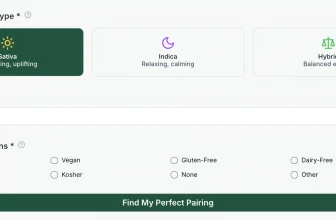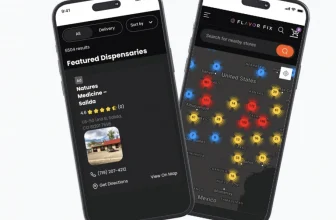
Stoners are creative types, especially when it comes to joints vs. blunts. Flavor Fix’s ultimate guide to joints vs. blunts will illuminate the uninitiated and maybe even change your life. At the very least, you’ll look cool and knowledgeable while you do your thing.
Contemporary Cannabis Craft
Cannabis is known worldwide as the plant of 50,000 uses. Even though there aren’t nearly as many ways to roll your weed, every smoker needs to have at least some familiarity with the differences between joints and blunts.
While pipes and bongs are considered typical stoner accessories and high-tech vaporizers are must-haves for the pros, joints and blunts are fundamental building blocks of cannabis culture and remain the most common way of enjoying marijuana for the average stoner.
Old-school roll-your-own is the most pleasant, practical, mobile, and fun way to smoke. Rolling your own joints and blunts is an art form, and as the old saying goes, “practice makes perfect.
The veterans among the stoners can roll blunts and joints almost entirely from muscle memory. On the other hand, beginners may not even know the exact difference between a joint vs. blunt, let alone how to make it beautiful while you get high.
What is the difference between a Joint and a Blunt?
For those of you who are new to the joys of cannabis and still learning to master the art of rolling yourself, allow us to explain the world of joints and blunts to you.
Joints
A joint is a cigarette that contains only cannabis. We’re talking pure marijuana with none of the extras. This form of consumption is one of the most popular and common among fans of the precious plant. Besides being accessible, these cigarettes are very easy to put together. You just need some good bud and rolling paper.
Many tokers use a grinder to grind up the marijuana to facilitate the rolling process, which is essential for some super-sticky strains like OG Kush. Then, you can roll a joint in one or more rolling paper or papers, depending on how much you want to pack in there. Once you select the rolling paper you’re going to use, place your cannabis on the paper, and roll your joint in a cylindrical shape. Voila! You now have a joint. Don’t forget to puff, puff, pass.
Usually, 0.3-0.5g of ground potent weed is enough for a decent joint. Larger roll-your-own joints typically have around 1-5g of weed and are usually reserved for cones and blunts. The only disadvantage that might put off some smokers is that the joints burn too quickly. This could be due to a rolling technique that is too loose or too compressed.
Rolling papers for joint smokers are available in various sizes and are made of different materials like hemp, rice straw, or flax. Choose whatever paper strikes your fancy.
However, the joints vs. blunts debate can’t be won based on paper alone.
Blunts
If you remember the movie Pineapple Express, you should also remember the enormous cross-shaped blunt that makes an appearance. A blunt is a super-big joint wrapped in cigar paper. Brown cigar papers are made out of tobacco, which means when you roll cannabis into a blunt using cigar paper, you’re smoking cannabis plus tobacco. However, you don’t add any actual tobacco to the weed you’re rolling a blunt.
Many smokers opt for a blunt because the tobacco paper heightens your high. Blunts are the hand-roll treat of choice for the cannabis connoisseur who seeks a little extra oomph with their high. In Europe and other countries, smoking blunts is the normal, most popular way to consume cannabis. Unlike joints, the defining characteristic of a blunt is that it’s wrapped in tobacco leaf paper (like cigars) rather than standard rolling paper. This characteristic provides many distinctive qualities of a blunt, including taste, odor, effect, and burn time.
Conquering the fine art of blunt rolling is no longer as demanding as it used to be. Let’s reminisce about a time before the flavored and freshly packaged commercial blunts of today existed.
In the era before premade blunt wraps, rolling a blunt was a task that required a lot of dexterity, a sharp knife, and a traditional cigar or cigarillo. The cigar paper is very fragile, and there’s no glue to seal the blunt closed. Plus, immediately after you have finished rolling the blunt, you have to run the flame of a lighter over the spit seal to keep it packed tightly. Rolling blunts was a dirty business, and you always had a leftover pile of tobacco. What do you do with a pile of leftover tobacco? No one knows.
Modern rolling papers and premade blunt wraps are sturdy and lickable without leaving you with a musty taste in your mouth. Flavored blunt wraps even taste great if you lick them to seal it up. As always, you have to be careful when rolling a blunt wrap, but no more than is the case with the typical joint.
Adding to the joints vs. blunts deliberation, know that blunts may offer you a more potent effect because their packaging is usually wider and can be loaded with more weed. Ready-made blunts take all the horror away from the blunt roll, and they also taste delicious to boot. If you can roll a joint with rolling papers, then you can definitely roll a blunt.
Blunts are perfect for special occasions. The presence of tobacco adds the stimulation that many users desire, especially when smoking a sativa strain like Kaya Island Girl. The combined flavor of the wrapper and the cannabis offers you a delicious experience.
Drawing a Comparison
One of the differences you might not realize at first glance is that joints and blunts will have different draw experiences. Draw is what the cigar folks will immediately recognize — the visceral feel of smoke passing through the blunt and into your mouth and lungs. You can feel this in a really primal way with a blunt — the same way you can with a good cigar. A joint is a little more like a cigarette again here by comparison. Sure, the air is still moving through it, but you just feel it more with a blunt. It’s partly a size thing. Isn’t everything?
Because of their size and material, blunts have a completely different sensory vibe in how they draw and breathe. Blunts are sturdy, too, so if you’ve got a tendency to dry-draw before you light it, the blunt’s tobacco-leaf exterior will not only give you a different combination of flavors (mmm, cigar wrap savoriness and herbaceous bud at the same time? Yes, please!), but this sturdier stock can handle heavier suction. It’s solid and robust.
As either a benefit or a negative — depending on your relationship to nicotine — a blunt will have some nicotine in it simply from the material you use to roll it up. It’s nothing as intense and heady as a spliff, which is a joint that’s fully half tobacco and half weed, but there is something.
If nicotine enhances your high, you’re going to love it. For a lot of connoisseurs, nicotine charges up the buzz a little bit. If you like the aroma of a good cigar, in all of its aged, roasted, and woody glory, then a blunt might strike you as the best of both worlds. If you have a smoking jacket, you’re going to want to throw it on, kick back, and savor the experience.
If you don’t have a smoking jacket, life is short. Go get yourself one. Or just, you know, throw on a comfy robe, live your best life, and treat yourself right.
While we all might pride ourselves on rolling a solid joint, the epicness of a truly massive, slow-smoking blunt can blow your whole afternoon in the best way possible. So which one is right for you?
Pros & Cons: Choosing Between a Joint and a Blunt
As always, it’s all about what you want to get out of the experience. What do you want the paper to taste like on your lips before you light up? How long do you want it to last? Are you down with a little nicotine combined with your THC?
You’ve got a ton of options, even before you head down the rabbit hole of flavorings and filters that are available for both options. Pros of a blunts are they burn slower and have a nice draw. Cons are that they are made with tobacco paper. Pros of a joint is that they are not usually made with tabaccoo. There are also a lot of very cool brands and flavors out there. Cons are that they burn much faster than blunts.






